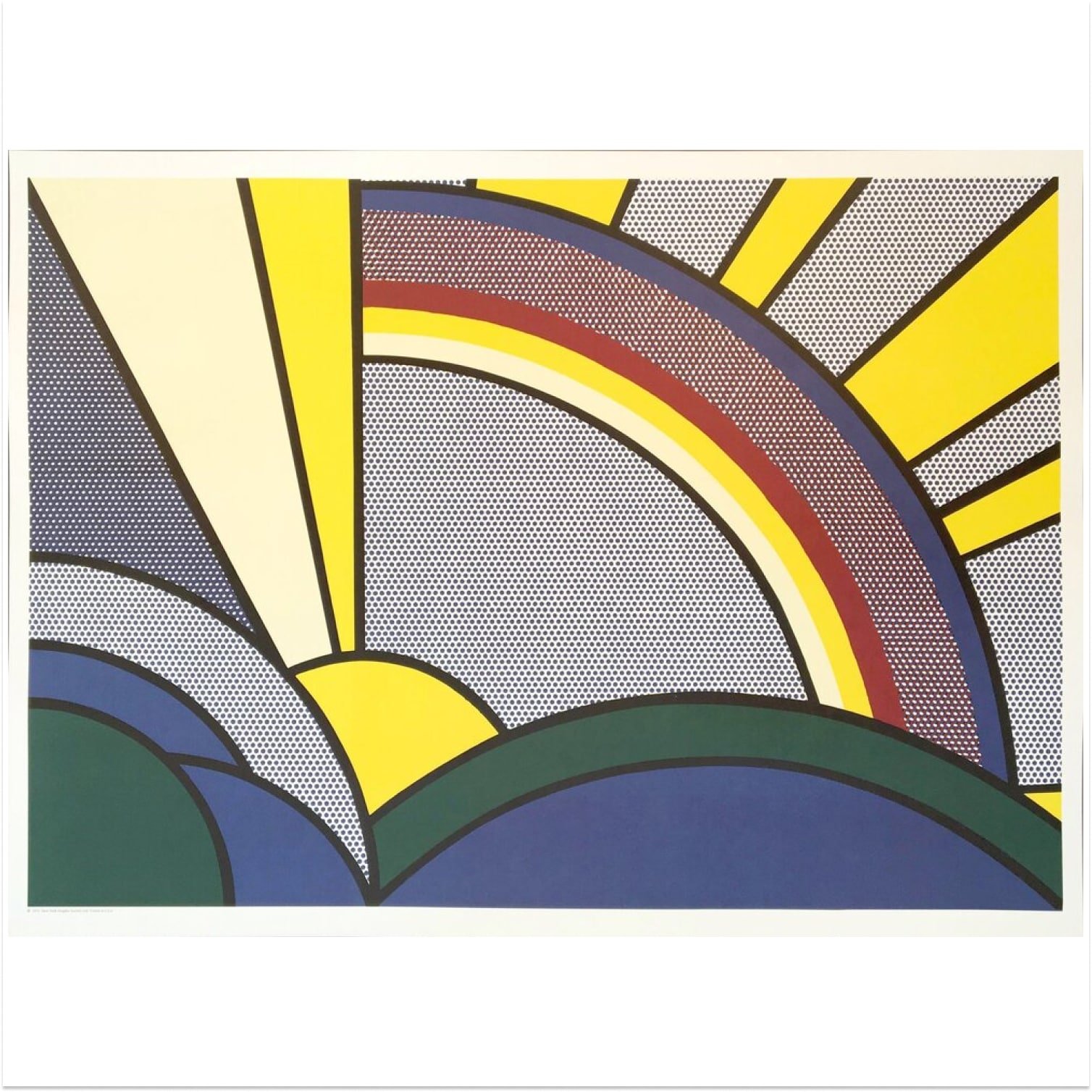Roy Lichtenstein
Roy Lichtenstein (1923–1997) was an American painter born and died in Manhattan, New York. A pioneering figure in the Pop art movement, Lichtenstein's work countered Abstract Expressionism using imagery and techniques from the popular culture. He briefly studied under painter Reginald Marsh, served in World War II, and later earned a master’s degree, teaching at Ohio State University and other institutions.
Initially exploring various styles, including Abstract Expressionism, his interest in comic strips led to iconic works featuring characters like Mickey Mouse, which he presented in a fine art format.
Discovered by the Leo Castelli gallery in 1961, he gained fame with large canvases inspired by comics and advertising. His distinctive style involved thick black outlines, primary colors, and Benday dots to mimic mass production. Lichtenstein’s first solo exhibition in 1962 was a success, and he became the first American to exhibit at London's Tate Gallery in 1966. Like Andy Warhol, Lichtenstein is especially famous for his rare limited printed editions.
Celebrated by a retrospective at the Centre Pompidou in 2013, his work, known for its artificiality, remains highly current.

Sunrise, 1965












